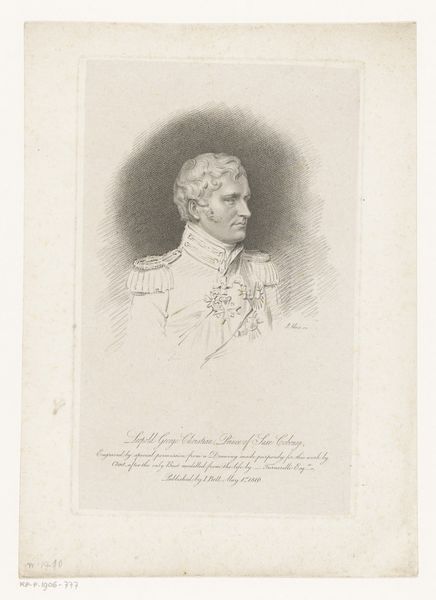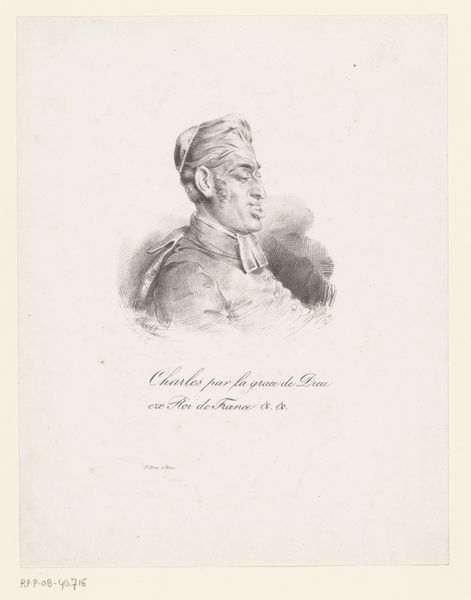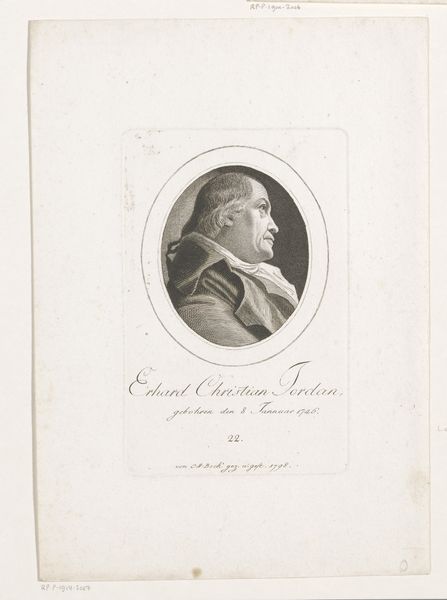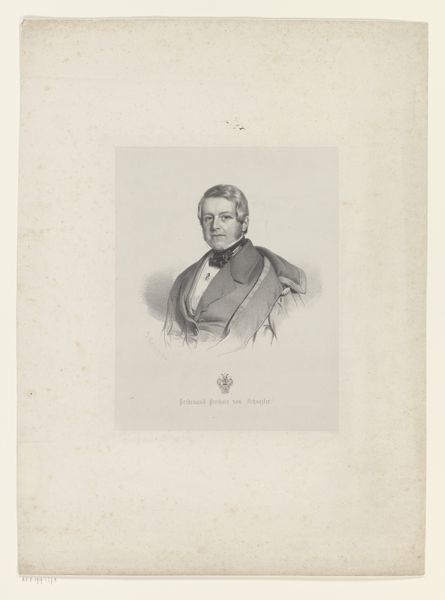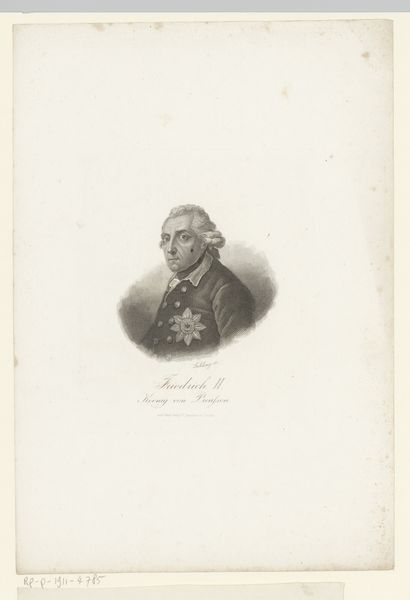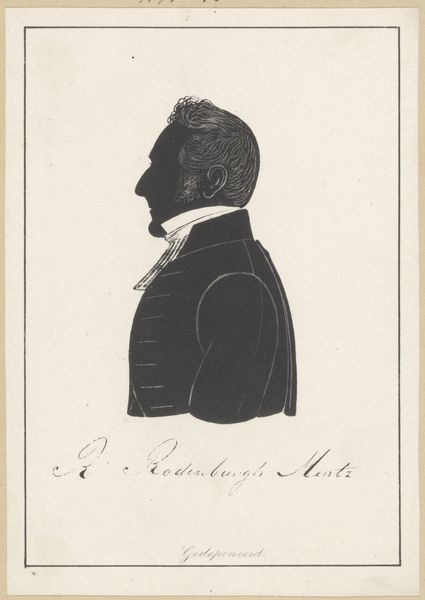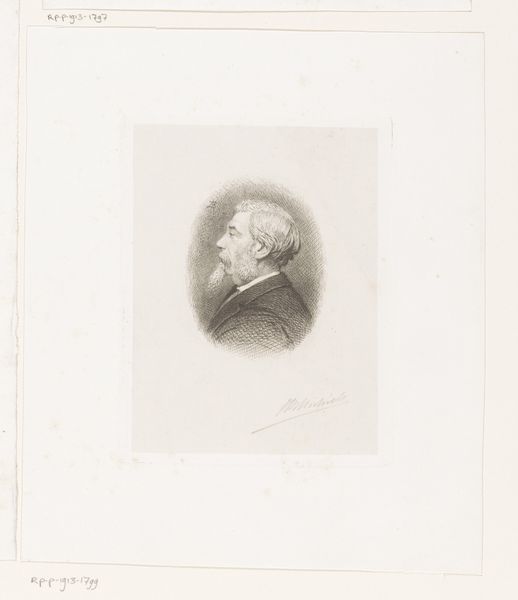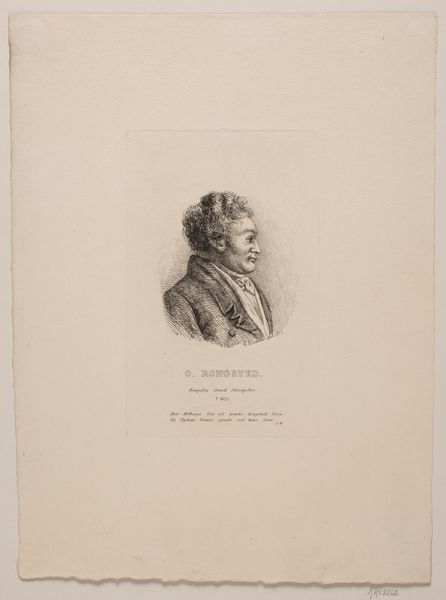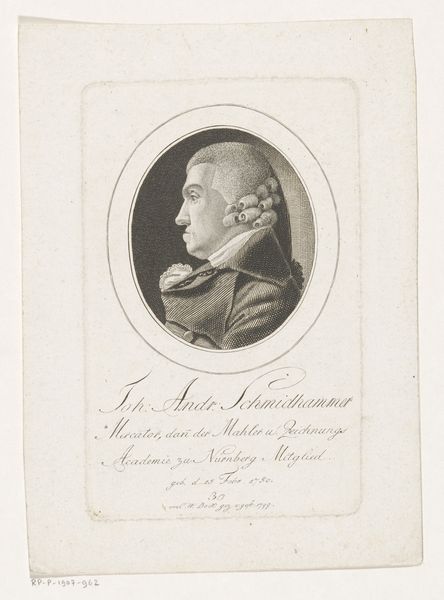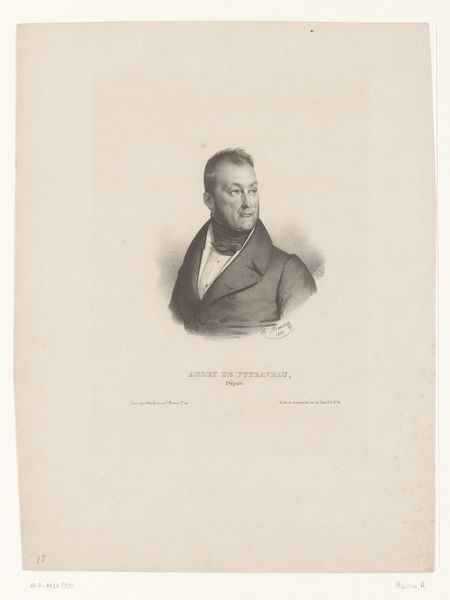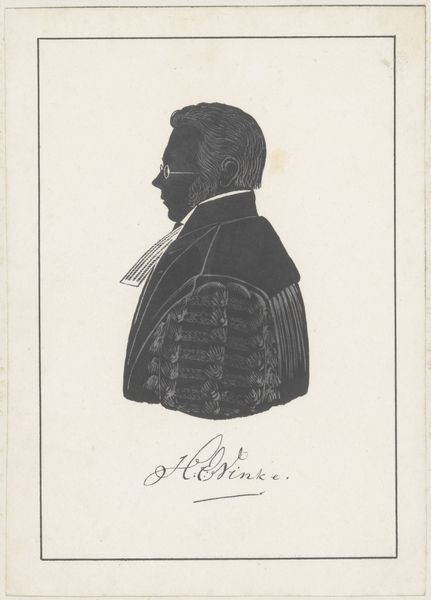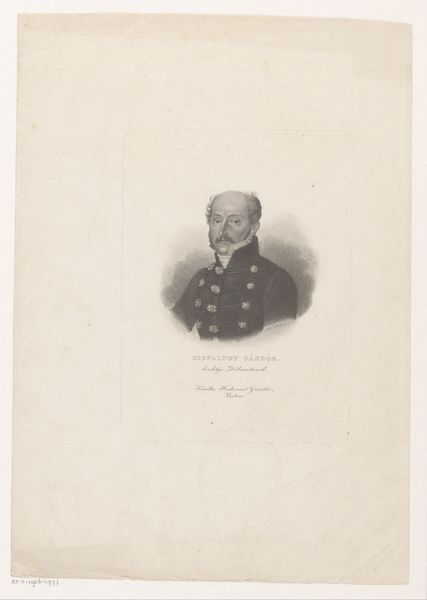
drawing, pencil
#
portrait
#
drawing
#
neoclacissism
#
pencil
#
academic-art
Dimensions: height 311 mm, width 234 mm
Copyright: Rijks Museum: Open Domain
Curator: Let’s spend a moment with this finely rendered pencil drawing: "Portret van kroonprins Frans van het koninkrijk Napels," or Portrait of Crown Prince Francis of the Kingdom of Naples, completed in 1821 by Pierre Roch Vigneron. Editor: My first impression is one of formality, almost stateliness, achieved through such precise, delicate linework. It's quite reserved in its presentation. Curator: Yes, there's a very strong neoclassical influence evident in the precision of the shading and the clear outlines. We see academic art expressed as a dedication to exactitude in its form, even in the depiction of fabrics and adornments, like the subject's medals. Think about the graphite and paper, readily available and relatively inexpensive materials, chosen to create a lasting image of power. Editor: The medals, of course, speak volumes. Each represents specific achievements and affiliations, all meticulously captured here. They act as talismans of status, communicating much about the subject’s identity and place in society, adhering strongly to that academic ideal, indeed. Curator: Notice the subtlety with which Vigneron captures the Prince's features. The texture of his clothing and hair using only a pencil is an interesting and accessible process, considering what Francis' status actually entailed. This artwork becomes an interesting point to discuss accessibility to power. Editor: Exactly! It is interesting, though, that he's in profile; like a Roman emperor on a coin, presenting a very controlled image. It almost deifies him, even if it's a deceptively humble medium. The iconography here is potent, making a strong statement. Curator: An intriguing dichotomy between method and outcome then? Vigneron employed quite simple means to manufacture an imposing presence and image. The act of crafting this regal presence can then become symbolic of the broader context and labour practices employed for the upper class in Europe at the time. Editor: It certainly offers a compelling interplay between material modesty and symbolic grandiosity, an idea carried on for centuries following. Curator: It is certainly worthwhile to stop and consider how symbols continue to transform their relationship with production as centuries advance. Editor: Agreed, it prompts a reflection on the enduring human fascination with both inner worth and the outer display.
Comments
No comments
Be the first to comment and join the conversation on the ultimate creative platform.
